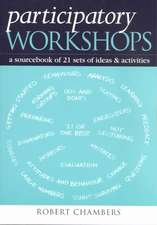Learning Through Practice: Models, Traditions, Orientations and Approaches: Professional and Practice-based Learning, cartea 1
Editat de Stephen Billetten Limba Engleză Paperback – 5 sep 2012
| Toate formatele și edițiile | Preț | Express |
|---|---|---|
| Paperback (1) | 835.99 lei 38-44 zile | |
| SPRINGER NETHERLANDS – 5 sep 2012 | 835.99 lei 38-44 zile | |
| Hardback (1) | 1000.36 lei 6-8 săpt. | |
| SPRINGER NETHERLANDS – 17 iun 2010 | 1000.36 lei 6-8 săpt. |
Din seria Professional and Practice-based Learning
- 18%
 Preț: 887.24 lei
Preț: 887.24 lei - 18%
 Preț: 891.48 lei
Preț: 891.48 lei - 18%
 Preț: 950.52 lei
Preț: 950.52 lei - 18%
 Preț: 950.03 lei
Preț: 950.03 lei - 18%
 Preț: 1112.30 lei
Preț: 1112.30 lei - 15%
 Preț: 641.85 lei
Preț: 641.85 lei -
 Preț: 394.87 lei
Preț: 394.87 lei - 15%
 Preț: 651.19 lei
Preț: 651.19 lei -
 Preț: 394.51 lei
Preț: 394.51 lei - 18%
 Preț: 1240.30 lei
Preț: 1240.30 lei - 15%
 Preț: 651.84 lei
Preț: 651.84 lei - 15%
 Preț: 649.39 lei
Preț: 649.39 lei - 15%
 Preț: 700.75 lei
Preț: 700.75 lei - 18%
 Preț: 733.96 lei
Preț: 733.96 lei - 15%
 Preț: 648.89 lei
Preț: 648.89 lei - 18%
 Preț: 943.57 lei
Preț: 943.57 lei - 18%
 Preț: 1014.89 lei
Preț: 1014.89 lei - 18%
 Preț: 784.61 lei
Preț: 784.61 lei -
 Preț: 391.22 lei
Preț: 391.22 lei - 15%
 Preț: 647.08 lei
Preț: 647.08 lei - 15%
 Preț: 700.29 lei
Preț: 700.29 lei - 15%
 Preț: 652.64 lei
Preț: 652.64 lei - 18%
 Preț: 886.62 lei
Preț: 886.62 lei - 15%
 Preț: 637.28 lei
Preț: 637.28 lei - 18%
 Preț: 946.41 lei
Preț: 946.41 lei - 18%
 Preț: 939.33 lei
Preț: 939.33 lei - 24%
 Preț: 864.86 lei
Preț: 864.86 lei - 18%
 Preț: 960.78 lei
Preț: 960.78 lei - 15%
 Preț: 635.31 lei
Preț: 635.31 lei
Preț: 835.99 lei
Preț vechi: 1099.99 lei
-24% Nou
Puncte Express: 1254
Preț estimativ în valută:
159.96€ • 167.47$ • 132.36£
159.96€ • 167.47$ • 132.36£
Carte tipărită la comandă
Livrare economică 01-07 aprilie
Preluare comenzi: 021 569.72.76
Specificații
ISBN-13: 9789400732452
ISBN-10: 9400732457
Pagini: 308
Ilustrații: XX, 288 p.
Dimensiuni: 155 x 235 x 16 mm
Greutate: 0.44 kg
Ediția:2010
Editura: SPRINGER NETHERLANDS
Colecția Springer
Seria Professional and Practice-based Learning
Locul publicării:Dordrecht, Netherlands
ISBN-10: 9400732457
Pagini: 308
Ilustrații: XX, 288 p.
Dimensiuni: 155 x 235 x 16 mm
Greutate: 0.44 kg
Ediția:2010
Editura: SPRINGER NETHERLANDS
Colecția Springer
Seria Professional and Practice-based Learning
Locul publicării:Dordrecht, Netherlands
Public țintă
ResearchCuprins
Series Foreword.- Series Editors’ Foreword.- Contents.- Contributors.- 1. Learning through Practice.- 1.1 Learning through Practice.- 1.2 Emerging and Growing Interest in Learning through Practice.- 1.3 Approaches to and Models of Learning through Practice.- 1.4 Section One: Conceptual Premises of Learning through Practice.- 1.5 Section Two: Instances of Practice.- 2. Learning in Praxis, Learning for Praxis.- 2.1 Introduction.- 2.2 Praxis and Theory.- 2.2.1 A Historical Perspective.- 2.2.2 A Phenomenological Perspective.- 2.3 Learning at/for Work: A Case from Fish Culture.- 2.4 Coda.- 3. Knowledge, Working Practices, and Learning.- 3.1 My Perspective on Knowledge.- 3.2 Learning Trajectories.- 3.3 The Construction of Professional Practices in the Workplace.- 3.4 How do People Learn at Work?.- 3.5 Transfer of Knowledge Between Contexts.- 3.6 Factors Affecting Learning at Work.- 3.7 The Role of the Manager in Supporting Learning.- 4. The Practices of Learning through Occupations.- 4.1 Learning for and through Practice.- 4.2 Historical Conceptions of Learning through Practice and their Worth.- 4.3 Participatory Practice: A Conception of Learning through Practice.- 4.4 Individuals’ Engagement, Agency, and Subjectivity.- Invitational Qualities.- 4.5 Intersubjectivity, Appropriation, and Extending Knowledge.- 4.6 Participation and Learning.- 5. Objectual Practice and Learning in Professional Work.- 5.1 Professional Work and Learning.- 5.2 New Contexts for Professional Work.- 5.3 Object-related Learning.- 5.4 The Study.- 5.5 Dynamics of Objectual Practice in Computer Engineering.- 5.5.1 Interplay between Explorative and Confirmative Practice.- 5.5.2 Linking Practitioners with Wider Knowledge Communities.- 5.5.3 Mediating Participation along Multiple Timescales.- 5.5.4 Facilitating Reflexive Learning.- 5.6 Concluding Remarks.- 6. Learning through and about Practice: A Lifeworld Perspective.- 6.1 A Need to Reexamine Learning through Practice.- 6.2 Historical Development ofLifeworld Perspective.- 6.3 Ways of Being in Workplace Contexts.- 6.4 Learning Ways of Being in Higher Education Contexts.- 6.5 Learning from a Lifeworld Perspective: Developing Ways of Being.- 7. Conceptualising Professional Identification as Flexibility, Stability and Ambivalence.- 7.1. Learning and Professional Identification as Life Politics.- 7.1.1 Flexibility – Stability – Ambivalence.- 7.2 Empirical Data.- 7.3 Becoming an Engineer or a Physician.- 7.3.1 Becoming an Engineer.- 7.3.2 Becoming a Physician.- 7.4 Being an Engineer or a Physician.- 7.4.1 Identification as a Flexible Strategy or a Permanent State.- 7.4.2 Engineer – Confined to Workplace, Occupation, and Hours.- 7.4.3 Physician – Profession Associated with Personality.- 7.5 Flexibility, Stability, and Ambivalence in Practice.- 7.6 Work, Life Politics, and Sustainable Life.- 7.6.1 Lifelong Qualification as Exclusion.- 7.6.2 Learning and Professional Identification as Life Politics.- 7.7 Concluding Remarks.- 8. Developing Vocational Practice and Social Capital in Jewellery.- 8.1 Introduction.- 8.2 Workplace and Practice-based Learning.- 8.3 The Development of Work Placement Scheme in the Jewellery Industry.- 8.4 The Development of Vocational Practice in the Jewellery Industry.- 8.5 Practice-based Learning: Epistemic and Pedagogic Issues.- 8.6 Conclusion.- 9. Guidance as an Interactional Accomplishment Practice-based Learning within the Swiss VET System.- 9.1 Introduction.- 9.2 Apprenticeship in the Swiss VET System.- 9.3 Researching Vocational Learning and Language-in-Interaction.- 9.4 An Interactional Approach to Guidance in the Workplace.- 9.4.1 Spontaneous Guidance.- 9.4.2 Requested Guidance.- 9.4.3 Distributed Guidance.- 9.4.4 Denied Guidance.- 9.5 Concluding Remarks and Practical Implications.- 10. Cooperative Education: Integrating Classroom and Workplace Learning.- 10.1 Cooperative Education as a Model of Practice-based Learning.- 10.2 The Development of Cooperative Education.- 10.3 The Organisational Milieu of Cooperative Education.- 10.4 Theorising Learning in Cooperative Education.- 10.5 Integrating Classroom and Workplace Learning.- 10.6 The Real Value of Cooperative Education.- 11. Individual Learning Paths of Employees in the Context of Social Networks.- 11.1 Introduction.- 11.2 Viewing the Organisation as a Network of Actors.- 11.3 Learning-Relevant Experiences Gained from the Work Network.- 11.3.1 How Actors Organise Work: A Cycle.- 11.3.2 Four Ideal Types of Work Process.- 11.3.3 Three Dimensions in Work-Network Structures.- 11.4 Learning-Relevant Experiences Gained in the Learning Network.- 11.4.1 Actors Organise Learning Networks: A Cycle.- 11.4.2 Actors Create Learning Programmes.- 11.4.3 Four Ideal Types of Learning Network.- 11.4.4 The Importance of Actors’ Action Theories.- 11.5 How do Employees create their Individual Learning Paths?.- 11.6 Learning, Networks, Structure, and Agency.- 12. Apprenticeships: What happens in On-the-Job Training (OJT)?.- 12.1 Apprenticeship and Learning.- 12.1.1 Institutional History of Apprenticeship Programmes in the US.- 12.2 Methodology of this Study.- 12.3 The Physical Context of the Classroom as compared to the Field.- 12.4 On the Job: The Worksite itself as Resource for Learning.- 12.5 On the Job: Tools and Equipment as Resources for Learning.- 12.6 Learning Through Interaction without Master-Apprentice Relationships.- 12.7 Learning and the ‘Bottom Line’.- 12.8 What can go Wrong.- 12.9 Apprenticeship Learning as Reproduction of the Economic Viability.- 12.10 Conclusion.- 13. Interactive Research as a Strategy for Practice-based Learninge.- 13.1 Introduction.- 13.2 Towards a Model of Competence Development.- 13.3 Cultural Context of Teachers’ Learning and Professional Growth.- 13.4 Interactive Research.- 13.5 The Interactive Processes – The ‘Quality Case’.- 13.5.1 Local Schools’ Collective Competence Development.- 13.6 The Practice-based Model.- 13.6.1 Identifying Practice.- 13.6.2 Reflective Transformation.- 13.6.3 Joint Construction and Institutionalisation of Tools.- 13.6.4 Professional Growth and Remaking of Practice.- 14. The Relationship between Coach and Coachees.- 14.1 Coaching.- 14.1.1 The Coaching Relationship.- 14.2 Coachees’ Accounts of the Coaching Relationship.- 14.3 Conclusion: Crucial Aspects of an Effective Coaching Relationship.- 15. The Development of Airline Pilot Skills through Simulated Practice.- 15.1 Pilot Training.- 15.2 Early Flight and Pilot Training.- 15.3 Pilot Education in the Jet Age.- 15.4 Influences on Major Aviation Training.- 15.4.1 Crew Resource Management and Nontechnical Skills.- 15.4.2 Technology.- 15.4.3 Simulation.- 15.5 Pilot Training into the Future.- 15.6 Practice-based Learning in Aviation.
Recenzii
From the reviews:
“Aim of this book is to provide an overview of how learning through practice can be conceptionalised, enacted and appraised. … Those who have tended to focus on teacher education as an example of workplace learning will find wide range of contexts discussed here to be stimulating.” (Michael Hammond, Teacher Development, October, 2011)
“Aim of this book is to provide an overview of how learning through practice can be conceptionalised, enacted and appraised. … Those who have tended to focus on teacher education as an example of workplace learning will find wide range of contexts discussed here to be stimulating.” (Michael Hammond, Teacher Development, October, 2011)
Textul de pe ultima copertă
Practice-based learning—the kind of education that comes from experiencing real work in real situations—has always been a prerequisite to qualification in professions such as medicine. However, there is growing interest in how practice-based models of learning can assist the initial preparation for and further development of skills for a wider range of occupations. Rather than being seen as a tool of first-time training, it is now viewed as a potentially important facet of professional development and life-long learning. This book provides perspectives on practice-based learning from a range of disciplines and fields of work. The collection here draws on a wide spectrum of perspectives to illustrate as well as to critically appraise approaches to practice-based learning. The book’s two sections first explore the conceptual foundations of learning through practice, and then provide detailed examples of its implementation.Long-standing practice-based approaches to learning have been used in many professions and trades. Indeed, admission to the trades and major professions (e.g. medicine, law, accountancy) can only be realised after completing extended periods of practice in authentic practice settings. However, the growing contemporary interest in using practice-based learning in more extensive contexts has arisen from concerns about the direct employability of graduates and the increasing focus on occupation-specific courses in both vocations and higher education. It is an especially urgent issue in an era of critical skill shortages, rapidly transforming work requirements and an aging workforce combined with a looming shortage of new workforce entrants. We must better understand how existing models of practice-based learning are enacted in order to identify how they can be applied to different kinds of employment and workplaces. The contributions to this volume explore ways in which learning through practice can be conceptualised, enacted, and appraised through ananalysis of the traditions, purposes, and processes that support this learning—including curriculum models and pedagogic practices.
Caracteristici
First volume to focus on the relationship between work, subjectivity and learning Addresses a growing field of interest in learning in and through practice Identifies models of practice-based learning that can be exercised within settings where professional practice occurs International contributions focussing on a range of workplace settings such as small and large business, new employees, older workers, self-employed workers








